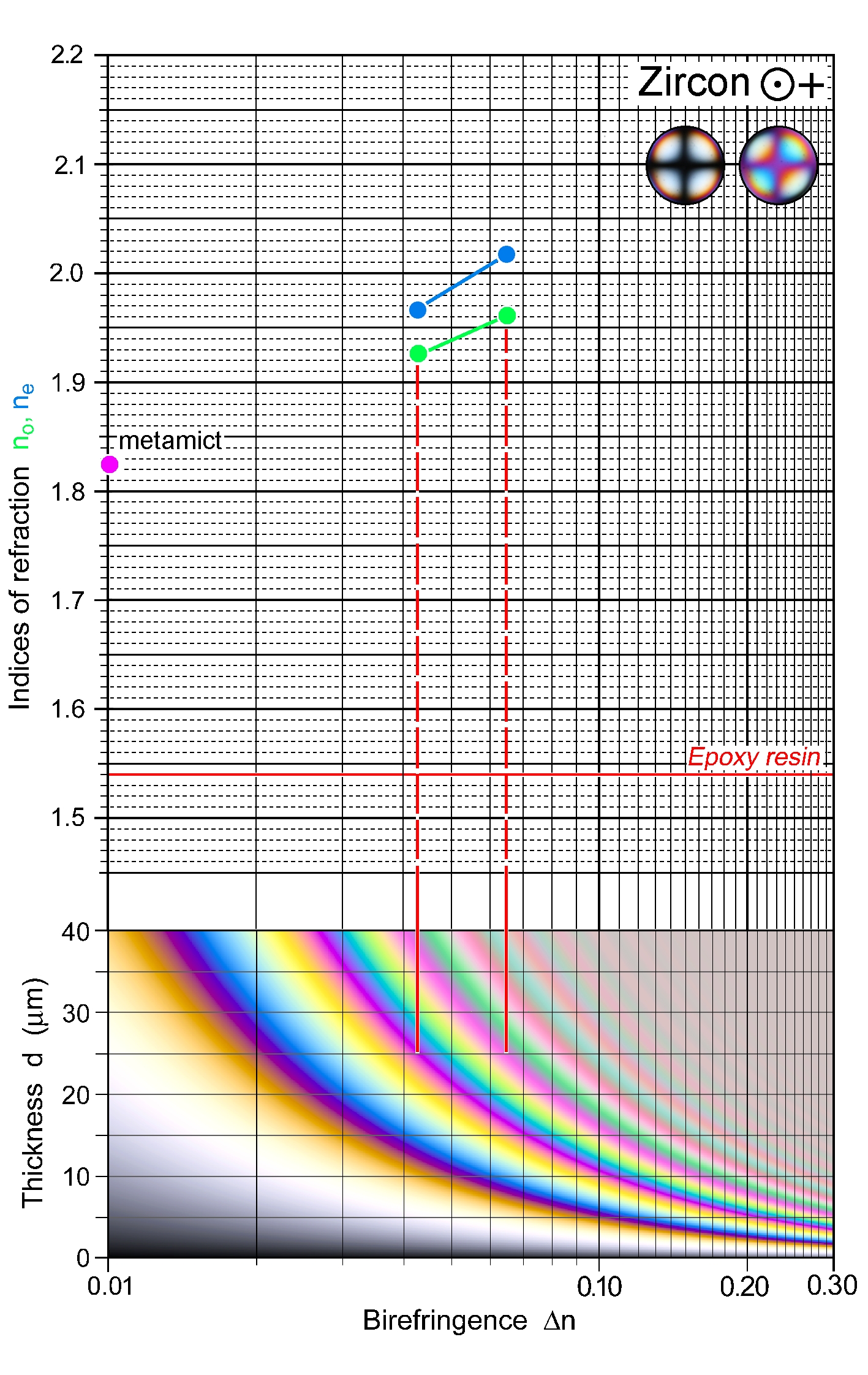|
| Formula | ZrSiO4 |
| | Optic class & sign | Uniaxial positive |
| | Relief | Very high |
| | Refractive indices | no = 1.922 -1.960
|
|
ne = 1.961 -2.015
|
|
| High Hf lowers refractive indices; metamict zircon 1.8 |
| | Birefringence (max.) | 0.042 - 0.065 |
| | | Metamict zircon is essentially isotropic |
| | Sign of elongation | Length-slow, l (+) |
| | Interference figure | Only obtainable from large enough crystals, then good isogyre cross with isochromes over two or three interference colour orders |
| | Colour / pleochroism | Colourless to pale brown |
| | Zoning | |
|
|
| Form | Habit | Bipyramidal-prismatic crystals elongate in c; simple four-sided crystals; crystals with a multitude of faces tend to show ellipsoidal to near-spherical shapes; crystal size is commonly very small |
| | | Surface | Euhedral crystals are common; zircon resorption in magmas can obliterate crystal faces |
| | Cleavage | {110}, {111}, poor; commonly not observed in thin section |
| | Twinning | Uncommon |
| | Extinction | Straight to prism faces in sections ∥ c |
|
|
| Reaction textures | |
| | Alteration / decomposition | Resistant to alteration and weathering |
|
|
| Occurence | Ign | Common accessory mineral in felsic igneous rocks; less common in mafic rocks; silica-undersaturated rocks with sufficient Zr contain baddeleyite instead of zircon; large zircon crystals can occur in pegmatites and kimberlites |
| | | Met | Metamorphic rocks derived from clastic sediments or igneous rocks commonly contain zircons inherited from these source materials, and, at medium to high grade in particular, newly grown zircon |
| | | Sed | Detrital sediments (heavy mineral fraction); accessory mineral in silt- and sandstones |
| | | Hyd | |
| | | Other | |
|
|
| Distinctive properties | Characteristic form, very high relief, bright interference colours |
| | Additional comments | Concentric growth zoning may be observed in thin section; α-radiation damage from radiogenic isotopes concentrated in zircon create pleochroic halos in some ferro-magnesian minerals |
|
|

 Images
Images 


 Images
Images 
